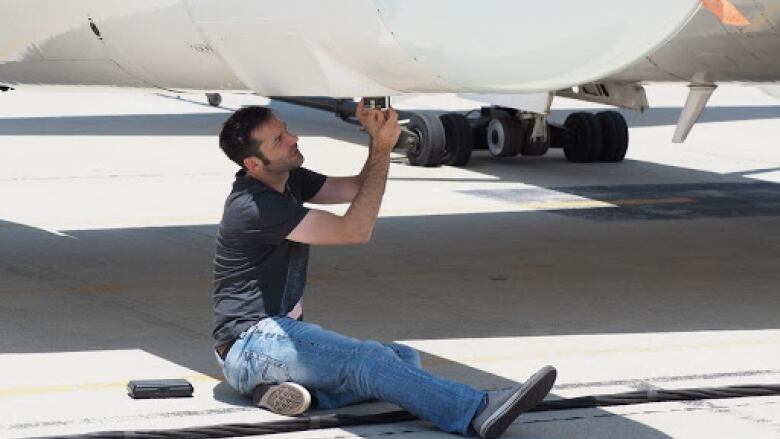U of S partners with NASA to test atmospheric water vapour monitor
Water vapours are a key measure of climate change

A seven-member research group from the Saskatoon-based university is at the NASA Armstrong Flight Research Centre in Palmdale, Calif., this week.
Its mission? To testalongside the Canadian Space Agency, York University, a private company, ABB, and none other than NASAthe prototype of a satellite device that could one day be launched into space to measure the presence of water vapours in the Earth's upper atmosphere.
Water vapours are a key measure of climate change since they both hasten the warming of the atmosphere and serve as an indicator of man-made greenhouse gases such as CO2.

So, naturally, Adam Bourassa says the U of S team isstoked to be working withNASA.
"It lends a great amount of credibility to the good research that's being done across the university," said Bourassa, a professor at the university's department of physics and engineeringphysics.
"We're doing optics and remote sensing and atmospheric physics and climate change," he said with a laugh."And NASA's interested in that."
WATCH: A research group from @usask is working with @NASA to fly-test an instrument for measuring water vapour in the atmosphere. #yxe pic.twitter.com/kdbIyDYsR9
—@gq_in_skThe prototype is about as big as a bedside table and is bolted onto the base of a NASA plane as the aircraft conducts two flights at high altitudes this week.
The first flight will travel over parts of California and Nevada. The second will head north near Canadian airspace, just south of Vancouver Island.
A shorter test run occurred last week.
The U of Steam's expertise lies in calibrating the prototype and analyzing the data post-flight (with the help of a supercomputer back in Saskatoon).

Working outside a lab and in the field alongside air force pilots and retired astronauts has proved a highlight so far, said Bourassa.
"They're running rigid systems with really tight operational constraints and they need to be extremely clear on what's going on, and that's been interesting for us to learn about that and a bit of a challenge for us to figure out how to work best with them."
The weather in California offered another challenge.
"It's something like 40 degrees out in the desert, where we have to bolt our instrument onto the airplane. And the instrument is quite temperature-sensitive," said Bourassa,"so that's been quite the challenge for us:trying to keep the instrument cool."
- MORE SASKATOON NEWS |'Feisty' Riversdale fights downturn trend with new summer businesses
- MORE SASKATOON NEWS |Texting for a cab coming soon to 2 Saskatoon taxi lines












_(720p).jpg)


 OFFICIAL HD MUSIC VIDEO.jpg)
.jpg)



























































































